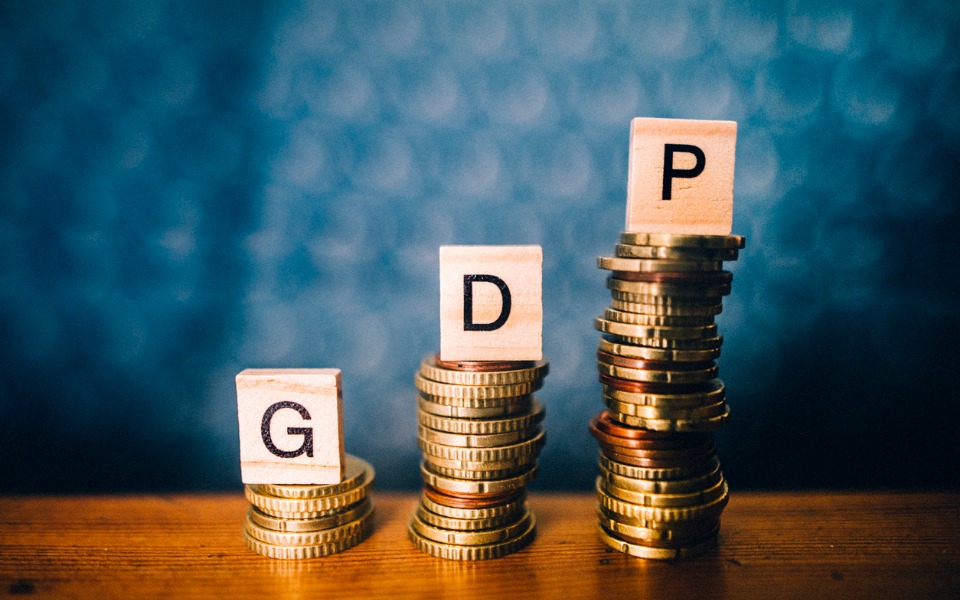
India's GDP grows at 13.5% in April-June quarter; lower than RBI’s prediction

India’s gross domestic product (GDP) grew at 13.5 per cent in the April-June quarter of the financial year 2022-23, according to the data released by the National Statistical Office (NSO) on Wednesday. This was India’s fastest pace of expansion in a year, but lower than broadly predicted by economists, analysts and the Reserve Bank of India (RBI).
Gross domestic product (GDP) in the three months to June 30 was 13.5 per cent higher than a year earlier, compared to 4.1 per cent in the January to March quarter. The last time GDP hit a higher annual growth was in April-June 2021 when it was 20.1 per cent higher than the pandemic-depressed level of a year before.
Double-digit growth rate
RBI had stated earlier this month that the GDP growth rate would probably be around 16.2 per cent in the first quarter (April-June) of this fiscal year. Many prominent analysts had also projected that the Indian economy would expand at a double-digit growth rate due to the base effect.
Also read: Indian economy can touch USD 20 trillion by 2047: Bibek Debroy
PTI reported that rating agency ICRA had predicted that the GDP was likely to grow at 13 per cent, while the State Bank of India, in its report, projected the growth rate at 15.7 per cent for April-June 2022. But the pace was expected to slow this quarter sharply and in the next two as higher interest rates hit economic activity.
According to the NSO data, the real GDP in Q1 2022-23 is estimated to attain a level of Rs 36.85 lakh crore as against Rs 32.46 lakh crore in Q1 2021-22. In the April-June quarter of 2021, the GDP growth rate was 20.1 per cent.
The nominal GDP or the GDP at current prices in Q1 2022-23 is estimated at Rs 64.95 lakh crore as against Rs 51.27 lakh crore in Q1 2021-22, showing a growth of 26.7 per cent as compared to 32.4 per cent in Q1 2021-22.
High inflation
With retail inflation above the upper limit of the central bank’s medium-term target of 2-6 per cent this year and predicted to stay elevated for the rest of 2022, RBI was forced to hike rates reluctantly. The RBI raised its benchmark repo rate by 140 basis points since May, including 50 basis points this month, while warning about the impact of a global slowdown on domestic growth prospects.
The increase in the cost of food and fuel has significantly impacted consumer spending, which makes up nearly 55 per cent of economic activity, even as monthly inflation has subsided over the past three months.
But economists said that forward-looking data show that Asia’s third-largest economy is coping well despite deteriorating global economic conditions.
Imported goods are now more expensive for individuals and businesses due to this year’s depreciation of the rupee against the dollar of more than 7 per cent.
Core sector growth slows down
The output of eight core infrastructure sectors slowed down to 4.5 per cent in July — the lowest in six months — against 9.9 per cent in the year-ago period, according to official data.
The output of these infrastructure sectors expanded by 13.2 per cent in June, 19.3 per cent in May, 9.5 per cent in April, 4.8 per cent in March, 5.9 per cent in February and 4 per cent in January. The production growth of eight infrastructure sectors — coal, crude oil, natural gas, refinery products, fertiliser, steel, cement and electricity — was 11.5 per cent in April-July this fiscal against 21.4 per cent a year ago. Crude oil and natural gas production contracted by 3.8 per cent and 0.3 per cent, respectively, during the month under review.
Also read: India could be Asia’s strongest economy in 2022-23, says Morgan Stanley
The data shows that the agriculture sector saw a growth of 4.5 per cent versus 2.2 per cent on a year-on-year basis.


